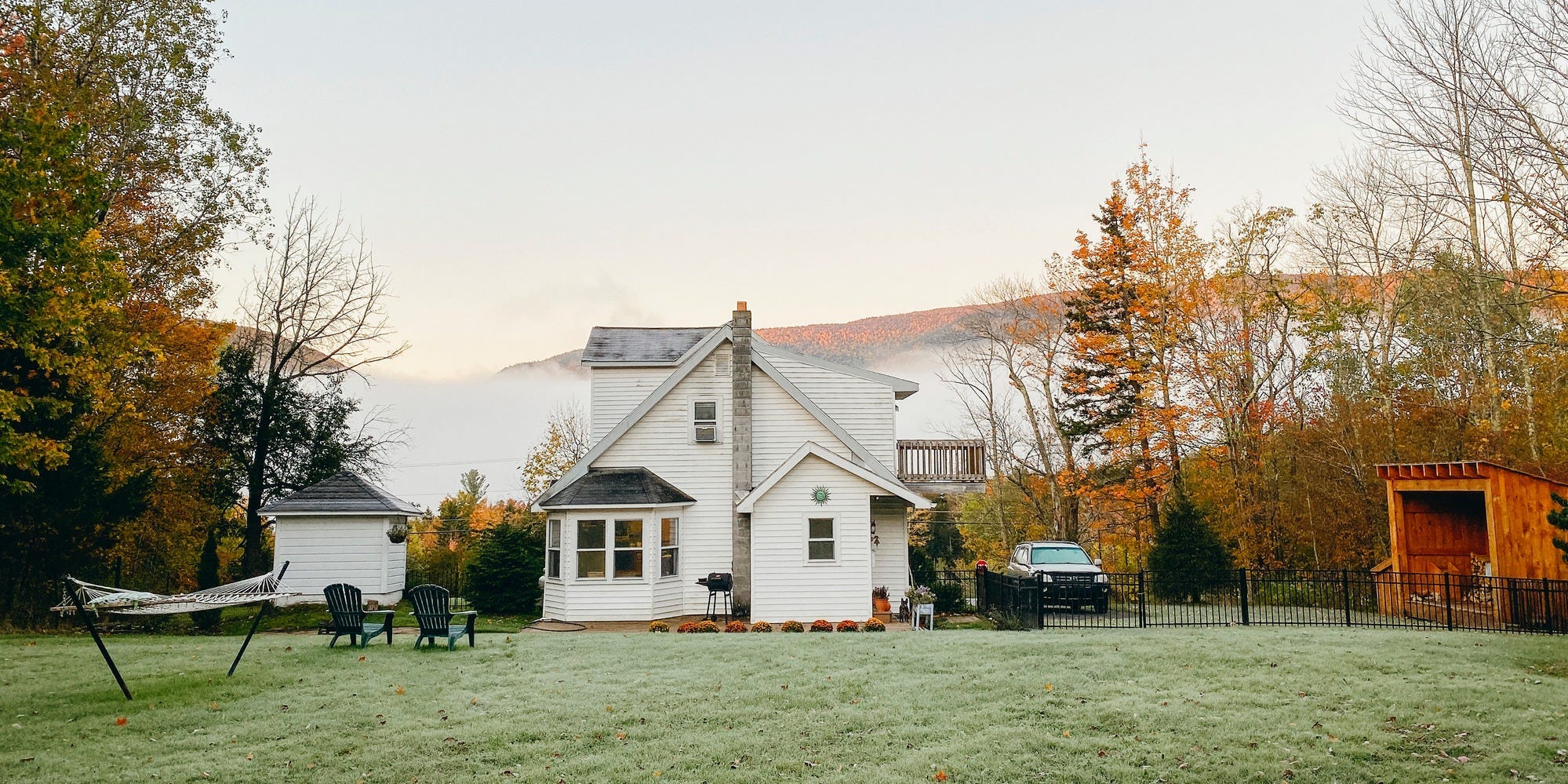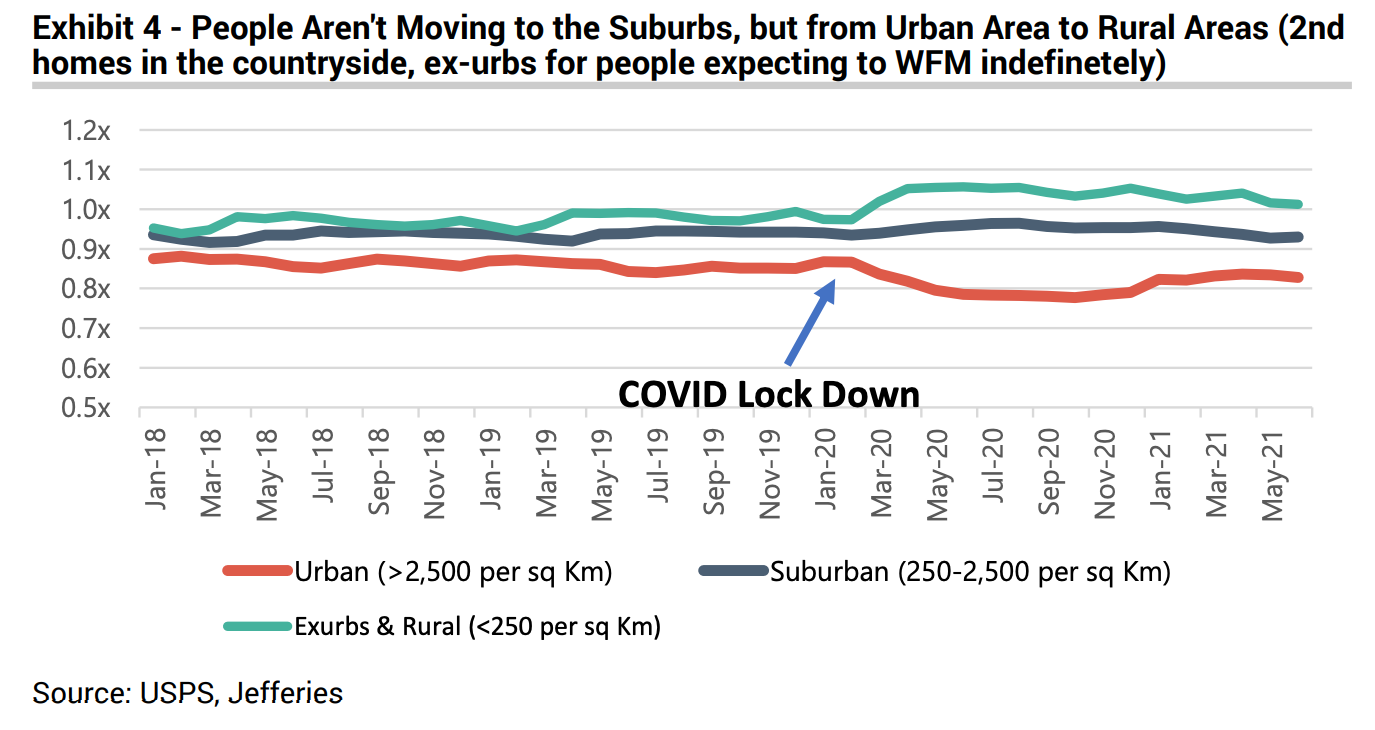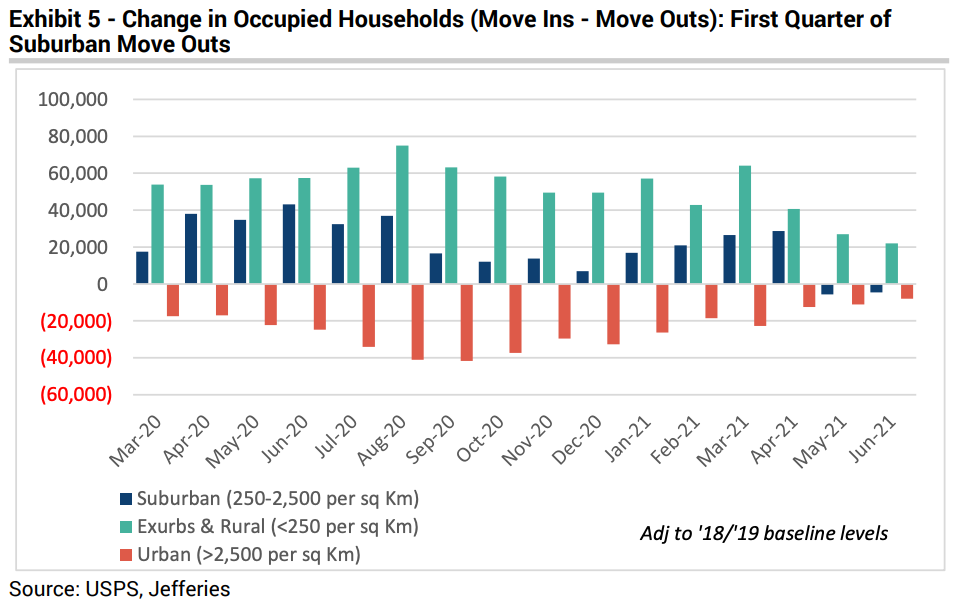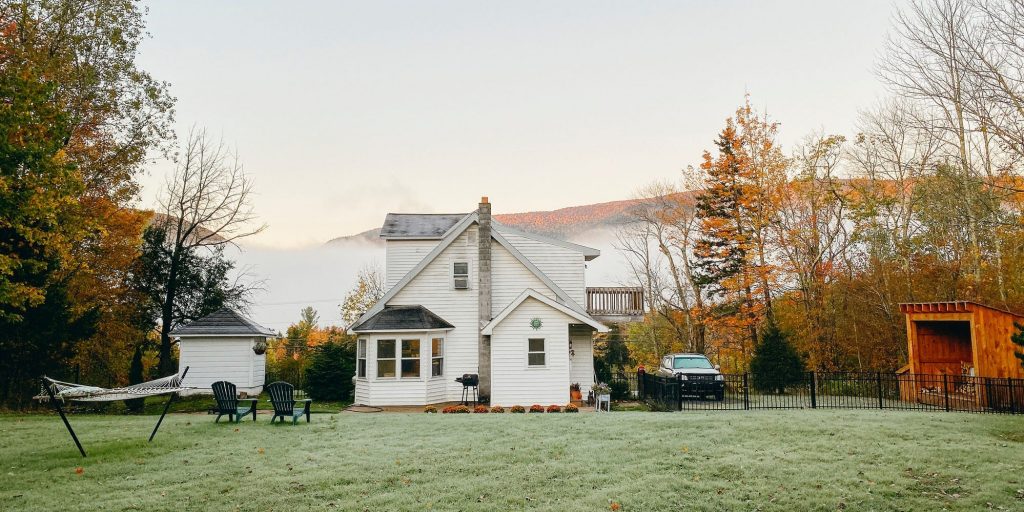
- Exurbs were the hottest destination for white-collar Americans fleeing cities during the pandemic.
- The areas are more rural than suburbs and offer cheaper housing and more space for those escaping the city.
- The exurban migration could end up mirroring the suburban boom of the 1950s.
- See more stories on Insider's business page.
After years of being overshadowed by city centers and chic suburbs, "exurbs" are winning over Americans. Think, less suburb, more rural; fewer sidewalks, more country roads; fewer mega malls, more strip malls.
These areas – characterized by more affordable housing and greater distance from cities – emerged as the districts du jour for well-to-do Americans during the Great Migration of the pandemic. The biggest population shift was from urban areas to rural neighborhoods and exurbs, Jefferies analysts said in a note citing USPS mail-forwarding data. Areas like Kenosha County, Wisconsin, likely benefitted from people leaving Milwaukee and Chicago, which sit 40 and 66 miles away, respectively. Similarly, Sussex County, New Jersey, is an exurb 55 miles from New York City.

Jefferies
Reasons for the migration are clear. Telecommuting allowed employees to move farther from their offices, trading convenience for more space and less costly neighborhoods. Stimulus checks, record-low mortgage rates, and bolstered savings from not being able to spend on many in-person services funded the moves. And while exurbs exist well outside of city centers, they're still close enough to commute when necessary.
The jump in exurb occupancy likely boosted wealth in these once-ignored areas. Median household income in exurbs stood at $74,573 in 2019, according to data from The American Communities Project cited by The Wall Street Journal. By comparison, the median income in the New York metro area was more than $83,000 and the measure neared $115,000 in the San Francisco Bay Area. The last year's moves by city-dwelling Americans likely helped close that gap.
The new suburbs
But while the reasons for the migration to the exurbs are clear, they mark a surprising debunking of the pandemic-era narrative that Americans were fleeing to suburbs in a trend that mirrored the suburban flight of the 1950s. Seventy years ago, Baby Boomers rushed to newly built suburbs and away from crowded cities to start families after World War II, in a trend that lasted for decades. Areas once neglected by homeowners reaped the benefits from fresh appreciation and nationwide migration.
Although it's too early to tell, the Jefferies note suggests that what's happening now is a new kind of migration altogether. The moves may not hold everywhere, and the shift reversed somewhat over the last two months. With businesses calling employees back to work, different cities are experiencing vastly different moving patterns.
New York City saw occupancy rebound slightly in May and June, reversing a small but notable portion of the exodus during the pandemic, likely driven, Jefferies said, by banks and financial firms requiring employees to return to their offices.

Jefferies
It's the opposite story in the Bay Area. Occupancy change was flat in San Francisco through May and June, while Silicon Valley's population shrank both months. A continued exit from Silicon Valley could be powered by tech giants' looser stance toward telecommuting, Jefferies analysts said.
Overall, changes in occupancy between urban, suburban, and exurban areas are moderating. Population shifts were most intense last summer and are now the smallest they've been since the pandemic began, according to Jefferies.
Still, exurbs and rural areas are the only regions that added households in May and June. At the same time, suburban occupancy fell for the first time since the pandemic began, and cities continued to shed households.
As businesses settle into post-pandemic work structures, a new dichotomy is emerging between the country's two coasts: the Bay Area's telecommuting tech workers and New York's office-dwelling financiers. Regardless of how population shifts trend from today, the latest data hints the green shoots of an exurban flight are only just showing.

